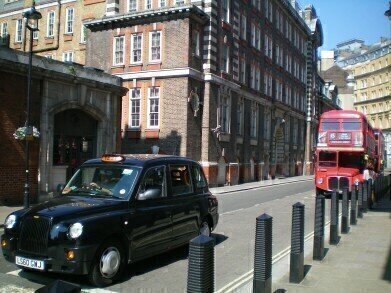Air Monitoring
What Is London's Ultra-Low Emissions Zone (ULEZ)?
Apr 15 2019
As of last Monday 8th April 2019, London’s ultra-low emissions zone (ULEZ) has come into effect. The area covers the innermost part of central London (the same zone affected by the Congestion Charge) and demands that vehicles which are not complaint with the latest emissions standards pay a fee of £12.50 to enter it each and every day.
The ULEZ is now in operation 24 hours a day, 365 days a year and is expected to affect around 40,000 vehicles in the national capital on a daily basis. What’s more, it will be rolled out to include the entire area between the North and South Circular roads in just two years’ time. It joins a long list of urban regions around Europe and beyond designed to bring down inner-city pollution levels caused by vehicular traffic, though it is being touted as the toughest to date.
The nitty gritty of ULEZ
The ULEZ will apply to the following vehicles, which will be subject to a daily charge of £12.50 for entering its limits:
- Motorcycles which are not compliant with Euro 3 Standards
- Petrol cars and vans which are not compliant with Euro 4 Standards
- Diesel cars and vans which are not compliant with Euro 6 Standards
- Buses, coaches and lorries which are not compliant with Euro 6 Standards
This last category of vehicle will be subject to a higher fee of £100 per day, while anyone caught transgressing the law may escape with a cautionary letter the first time - but will be penalised with a £160 fine thereafter.
The scheme was first proposed by former London Mayor Boris Johnson in 2013, though his successor Sadiq Khan has brought it to fruition one full year ahead of schedule. It is hoped it can help to reduce toxic emissions from vehicles by 45% in just 24 months. It plans to achieve by encouraging drivers to favour more environmentally-friendly road transportation as opposed to older and more polluting models powered by fossil fuels.
Other LEZs around the world
While the ULEZ is the first of its kind, there are plenty of other low emissions zones around the UK, Europe and beyond. The first ever LEZ was introduced in Gothenburg, Lund, Malmo and Stockholm in Sweden in 1996, meaning the Scandinavian country has a head-start on its rivals and currently enjoys improved air quality than many of its neighbours.
Elsewhere in Europe, Italy has the most LEZs in place, though many of them are only in operation at certain times of the year. Germany also has around 80 zones in play, while the Netherlands, the UK and France each have 14. However, the latter country only brings its LEZs into force on particularly poor days of pollution.
Further afield, the South Korean capital of Seoul introduced measures in 2017 to prohibit diesel cars which do not meet emissions standards in real-life conditions, while nearby Tokyo was far further ahead of the game, banning diesel cars and vans as far back as 2000. Other countries such as Colombia, Mexico and the US also have their own version of the restrictions, though there is no agreed-upon standard LEZ which applies across the globe.
Digital Edition
IET 34.2 March 2024
April 2024
Gas Detection - Biogas batch fermentation system for laboratory use with automatic gas analysis in real time Water/Wastewater - Upcycling sensors for sustainable nature management - Prist...
View all digital editions
Events
Apr 30 2024 Melbourne, Australia
Apr 30 2024 Birmingham, UK
May 03 2024 Seoul, South Korea
May 05 2024 Seville, Spain
May 06 2024 Minneapolis, MN, USA


















